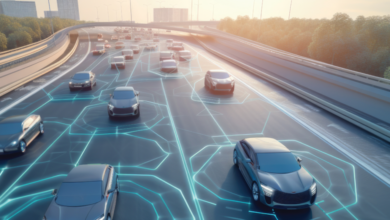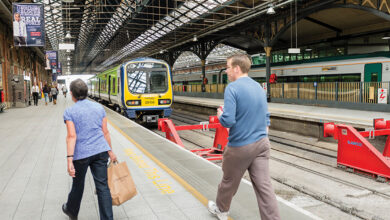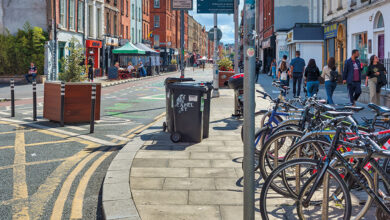Rail at the heart of our sustainable future
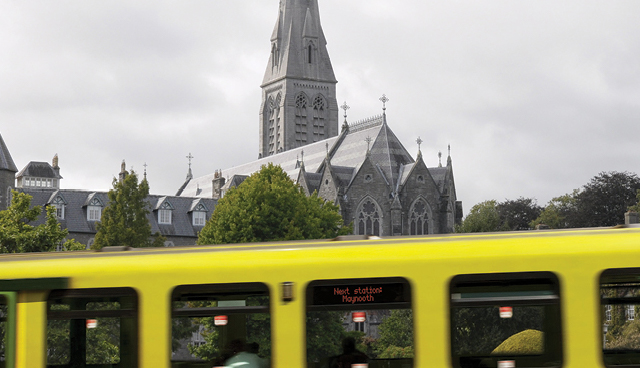
We are at a moment of unique opportunity to build a new future. Jim Meade, Chief Executive of Iarnród Éireann, outlines rail’s role in the recovery.
 Policy makers, experts and analysts continuously have to grapple with the challenges posed by imagining the future we want as a society and economy, while addressing the immediate and urgent requirements of day to day service delivery.
Policy makers, experts and analysts continuously have to grapple with the challenges posed by imagining the future we want as a society and economy, while addressing the immediate and urgent requirements of day to day service delivery.
The nature of Iarnród Éireann’s day to day service delivery – as was the case for companies and industries all over the world – transformed virtually overnight in mid-March this year, as we went from the highest patronage ever seen on our rail network to asking our customers, other than those providing essential services, not to travel with us.
However, as we rebuild from the global pause caused by Covid-19, the appetite for a more sustainable future for our society and economy, and the repeated pattern of rapid recovery from economic shocks demonstrates the importance of continuing with investment in mobility for our citizens and communities.
There has never been a time when we have such a unique opportunity to facilitate a more sustainable pattern of travel, development and economic activity, to meet climate action goals at national and international level, and improve quality of life for generations to come.
In 2019, we in Iarnród Éireann carried a record 50.1 million passengers on our services, across Intercity, DART and Commuter, and trends were set to see yet more record highs successively this year, and in the years to come.
Project Ireland 2040 mandates a pattern of development which can see our rail alignments as the focus of development, and, with the support of the National Transport Authority and Department of Transport under Project Ireland 2040, our ambitions are much greater to meet the needs of the economy, society, and the communities and commuters we serve.
At the heart of our plans is DART+, supported by the Irish Government under the National Development Plan. Put simply, this €2 billion investment will allow more trains to operate on all routes on our network, by building the capacity of the most congested sections in the Greater Dublin Area.
It will see:
• The electrification of the Maynooth, Hazelhatch and Drogheda rail lines;
• Associated works such as the elimination of level crossings on the Maynooth line;
• Infrastructure works to allow more trains to operate, including at Connolly and Docklands;
• Integration with other public transport modes including proposed MetroLink and BusConnects programmes;
• A major expansion of our fleet, with up to 600 electric and hybrid train carriages to be ordered, resulting in almost 80 per cent of journeys on our network being delivered under electric power; and
• A doubling of the carrying capacity of the Greater Dublin Area network.
Additionally, a programme to convert our existing Intercity railcar fleet to diesel electric operation is underway, reducing emissions, fuel usage, costs and noise.
Improving access to services for all customers will also be at the heart of our investment plans. Accessibility for mobility and sensory impaired customers will be a principle of all station and fleet improvements, and our largest ever lift renewal programme is underway. Investment in park and ride facilities, and customer information will also make our services easier to access and to use.
Investment in infrastructure in the Dublin area will not only benefit Dublin commuter belt services, however. It will grow our ability to operate services right around the country. We are also ambitious to see journey time improvements on national routes, and targeted line speed improvement works are already taking place.
We are also ambitious for our regional cities. The Cork Metropolitan Area Transport Strategy (CMATS) sets out major expansion plans for our successful Cork Commuter rail service within the wider Cork transport network. Up to eight new stations, and infrastructure works which will allow a 10-minute DART style frequency between Cork city and each of Cobh, Midleton and Mallow are envisaged, allowing passenger growth to up to 16 million over the life of the strategy, and with opportunities for accelerated delivery.
In Galway, double tracking between Athenry and Galway would allow for a major increase in service frequency to build on previous growth in passenger numbers between the two stations. An interim measure of a passing loop and second platform at Oranmore would also allow us to expand to meet demand, and this will be evaluated further.
Waterford city centre is set for a transformative development at the North Quays, and Waterford’s Plunkett Station will be relocated to be part of an integrated transport hub under these plans. In Limerick, the completion of the city’s own transportation hub centred on Colbert Station will also boost services, and the Limerick Shannon Metropolitan Area Transport Strategy will assess the opportunities provided by the network of rail lines around Limerick City.
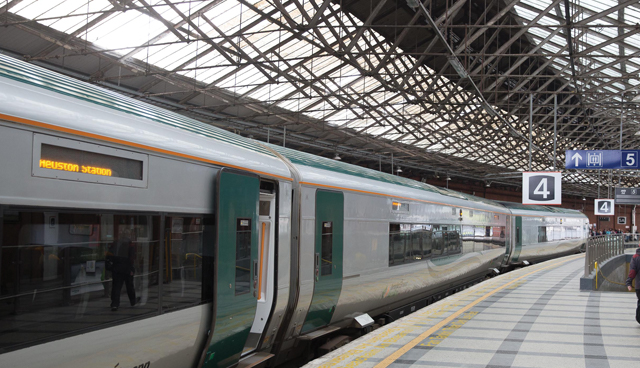
“With strong national policies on transport, planning, sustainability and climate change mitigation, we stand at a time of unique opportunity to shape a better future for Ireland.”
Project Ireland 2040, by strengthening regional cities, will provide a stronger environment for our national rail network to meet transport needs. Railways, more than any other form of public transport, rely on critical mass and higher density population centres to provide the economic case for investment, and the societal benefit. By developing strong cities to counterbalance Dublin, we ensure that the development of railways in Ireland in the future is truly national.
As well as targeting improved journey times on the national Intercity network, we have also developed a specific strategy for the Dublin/Belfast Enterprise service, jointly operated with our colleagues in Translink.
Both companies propose an expansion to an hourly service, and improved journey times on this key link between the two largest cities on the island. Looking to a longer-term future, this densely populated corridor is targeted to be the first electrified Intercity line on the island, building on the DART Expansion electrification to Drogheda. Higher speed services along the Belfast-Dublin-Cork corridor are to be studied further under the Programme for Government.
As well as these service enhancement programmes, our future investment will also address key safety and maintenance requirements.
Construction has begun on a new National Train Control Centre and in major safety investment programmes. Relaying of the Dublin-Cork line will improve service safety, performance and ultimately speeds.
With strong national policies on transport, planning, sustainability and climate change mitigation, we stand at a time of unique opportunity to shape a better future for Ireland.
We can look back at the challenges and crisis we have lived through in 2020 and reflect on the positive transformation we subsequently delivered for how we live as a nation.

Iarnród Éireann
Head Office
Connolly Station
Dublin D01V6V6
W: www.irishrail.ie
T: 01 836 6222
E: IENews@irishrail.ie
Twitter @irishrail

